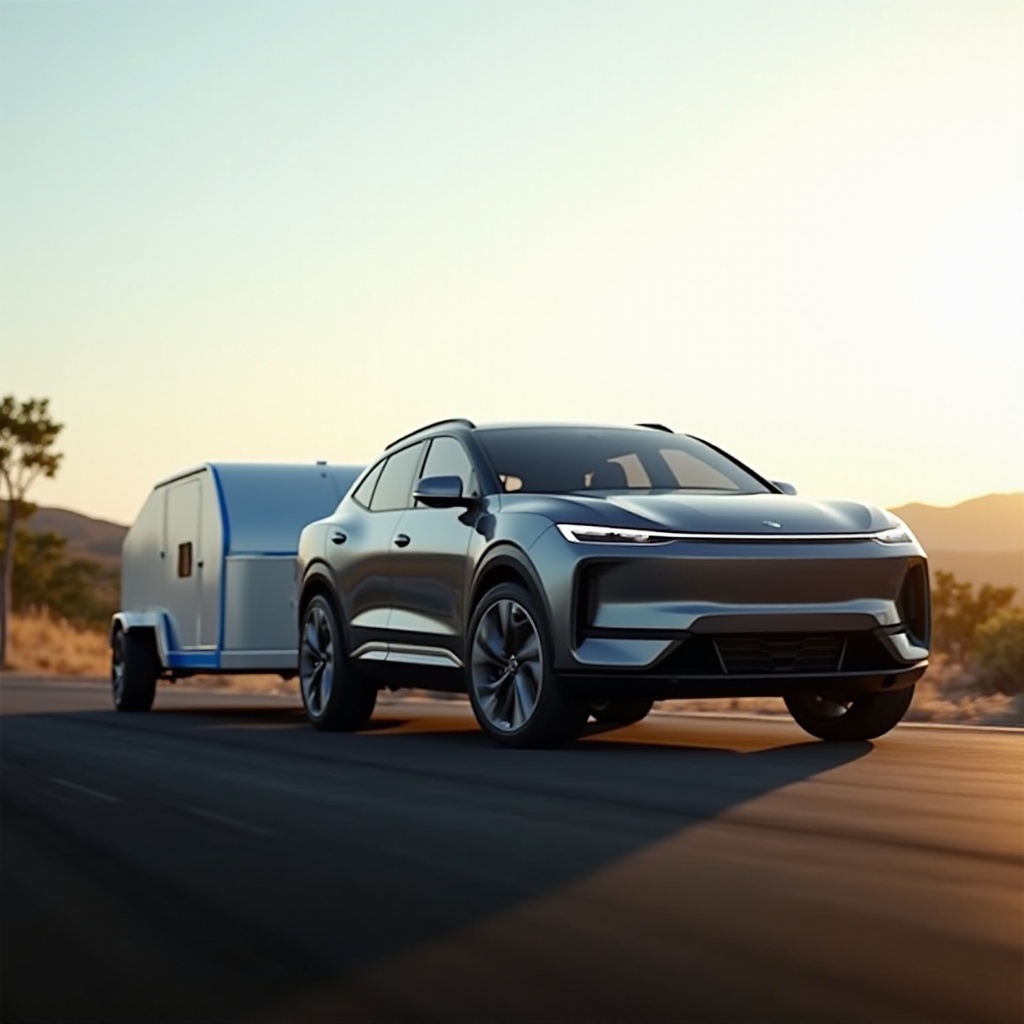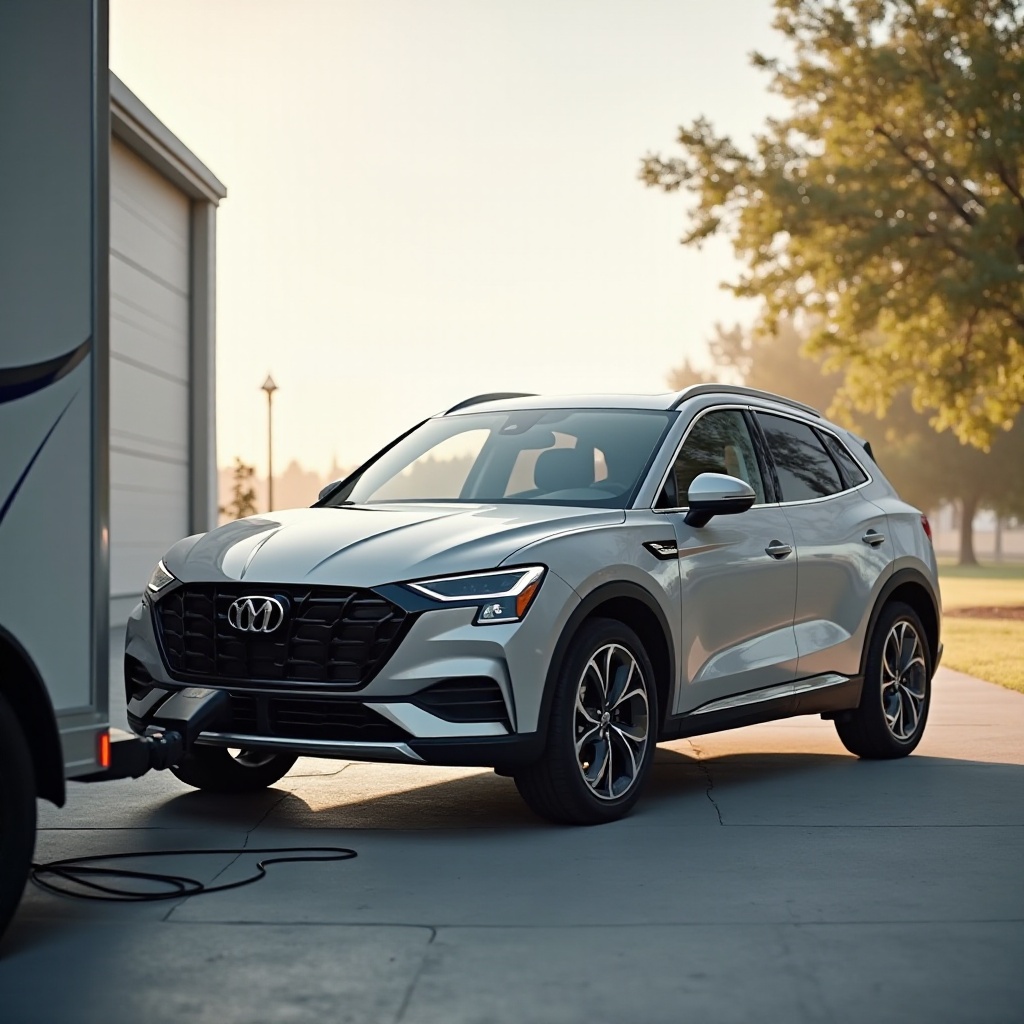Introduction
Plug-in hybrid vehicles (PHEVs) blend the best of both electric and gasoline engines, becoming increasingly popular for their efficiency. However, their capabilities go beyond just fuel economy. Many of these vehicles can also tow significant loads, an important feature for outdoor enthusiasts, DIYers, and those needing to transport equipment. Understanding and maximizing the towing capacity of plug-in hybrids can expand their utility, offering greater versatility for various needs.

Understanding Plug-In Hybrid Vehicles
What Are Plug-In Hybrid Vehicles?
Plug-in hybrid vehicles combine a traditional internal combustion engine with an electric motor and a rechargeable battery. This configuration allows the vehicle to operate on electric power alone for short commutes while relying on gasoline power for longer trips. The versatility in fuel sources enables better fuel efficiency and lower emissions compared to regular gasoline or diesel vehicles.
Benefits of Plug-In Hybrids for Towing
Combining the electric and gasoline engine outputs gives PHEVs a towing advantage. The electric motor provides added torque – a critical factor for towing. This torque boost can enhance performance, especially at lower speeds. Additionally, fewer emissions and better fuel economy make plug-in hybrids a more environmentally friendly option for those needing towing capabilities.

The Importance of Towing Capacity in PHEVs
Measuring Towing Capacity
Towing capacity refers to the maximum weight a vehicle can safely tow. This includes the combined weight of the trailer and any cargo being hauled. It’s crucial to adhere to these specifications to avoid damaging the vehicle or compromising safety. Manufacturers determine towing capacities through rigorous testing, which considers the vehicle’s engine power, structural integrity, suspension, and braking system.
Why Towing Capacity Matters for Hybrid Owners
Towing capacity is a vital consideration for hybrid owners who may use their vehicles for recreational or work purposes. Whether you’re hauling a boat, a camper, or construction equipment, knowing your vehicle’s towing limits ensures safe and efficient towing. Misjudging your vehicle’s capabilities can result in excessive wear and tear, or even accidents. Therefore, understanding and leveraging this feature is essential for hybrid owners seeking to utilize their vehicle’s full potential.
Top Plug-In Hybrid Models and Their Towing Capacities
Understanding the towing capabilities of different PHEV models helps you make an informed decision. Below are some leading names in the market and their impressive towing limits.
Tesla Model X
The Tesla Model X sets a high standard, boasting a towing capacity of up to 5,000 pounds. This versatile vehicle offers exceptional electric range and robust performance thanks to its dual-motor all-wheel-drive system. Beyond towing, the Model X provides cutting-edge technology and ample cargo space, making it an excellent choice for hybrid enthusiasts.
Ford Explorer Hybrid
The Ford Explorer Hybrid stands out with a towing capacity of 5,000 pounds. It combines the traditional ruggedness of an SUV with the efficiency of a hybrid system. The Explorer Hybrid’s substantial electric power and gasoline engine prowess guarantee a dependable towing experience, especially for larger loads.
Toyota RAV4 Prime
Another remarkable option is the Toyota RAV4 Prime, which can tow up to 2,500 pounds. This compact SUV offers impressive acceleration and efficiency, making it ideal for those looking to tow smaller, lighter trailers. The RAV4 Prime’s electric-only range and energy-efficient hybrid system enable daily driving with minimal gasoline use.
Factors Influencing Towing Capacity in Plug-In Hybrids
Battery Performance and Range
The battery performance of a PHEV significantly influences its towing capacity. Active towing can quickly deplete a battery’s charge, reducing the vehicle’s overall range. Models with larger batteries or advanced battery management systems often manage towing demands better, ensuring optimal performance over longer distances.
Vehicle Design and Stability
A vehicle’s design, including its frame, suspension, and braking systems, must support the additional weight of a trailer. Stability control systems and weight distribution also play critical roles in maintaining safe towing conditions. PHEVs designed with towing in mind usually feature reinforced structures and enhanced stability features.
Manufacturer Specifications
Each manufacturer provides specific guidelines for towing capacity, based on comprehensive testing and design parameters. It’s vital to review these specifications in your vehicle’s manual or directly through the manufacturer. Adhering to these guidelines ensures you maximize your PHEV’s towing capabilities without compromising safety.
Preparing Your Plug-In Hybrid for Towing
Ensuring your plug-in hybrid is adequately prepared for towing not only maximizes its capabilities but also guarantees safety.
Essential Accessories
Before towing, equip your PHEV with necessary accessories:
1. Trailer Hitch: Ensure it matches the towing capacity.
2. Brake Controller: Enhances braking efficiency with trailers.
3. Tow Mirrors: Improves visibility around the trailer.
Maintenance and Inspection Tips
Regular maintenance ensures your vehicle stays in top condition for towing. Check and follow these steps:
1. Inspect the Battery: Ensure it’s fully charged and in good condition.
2. Tires: Check tire pressure and tread to avoid blowouts.
3. Brake System: Ensure seamless operation for safe stopping.
4. Cooling System: Verify proper fluid levels to prevent overheating.

Best Practices for Towing with Plug-In Hybrids
Following best towing practices is crucial for both safety and vehicle longevity.
Proper Load Distribution
Time and effort spent on effective load distribution can prevent accidents:
1. Weight Balance: Ensure even weight distribution across the trailer.
2. Cargo Securement: Use straps or bungee cords to secure items.
3. Tongue Weight: Keep the tongue weight between 10-15% of the trailer’s total weight.
Safe Driving Techniques
Safety while towing is paramount:
1. Adjust Speed: Drive slower than usual, particularly on turns.
2. Braking Distance: Anticipate longer stopping distances.
3. Regular Breaks: Avoid driver fatigue by taking regular breaks.
Legal Considerations and Safety Tips
Stay within legal and safety guidelines:
1. Weight Limits: Don’t exceed posted weight limits.
2. Signal Usage: Signal well in advance of any maneuvers.
3. Trailer Lights: Ensure trailer lights work properly before every trip.
Conclusion
Plug-in hybrids offer a compelling mix of efficiency and power, making them an excellent option for towing. By understanding the towing capacities of various models, preparing your vehicle properly, and following best practices for towing, you can safely and effectively leverage your PHEV for a range of towing needs.
Frequently Asked Questions
Can plug-in hybrid vehicles tow heavy trailers?
Yes, certain plug-in hybrid models, like the Tesla Model X and Ford Explorer Hybrid, can tow heavy trailers up to 5,000 pounds.
Does towing affect the battery life of a plug-in hybrid?
Towing can slightly reduce the battery life over time due to the higher demand it places on the power system, but proper maintenance can mitigate significant effects.
What are the top accessories needed for towing with a PHEV?
Essential accessories include a trailer hitch, brake controller, and custom tow mirrors to enhance visibility and control.
